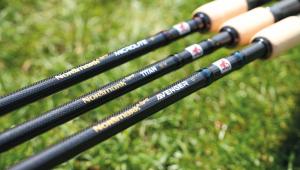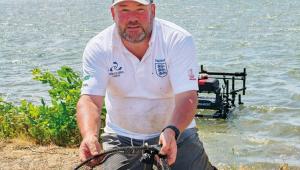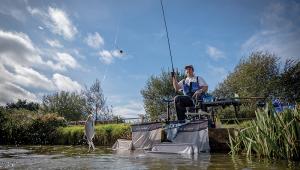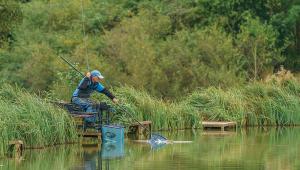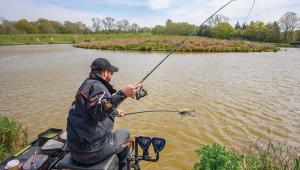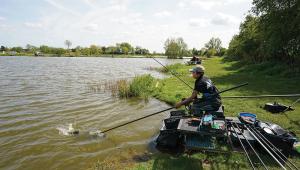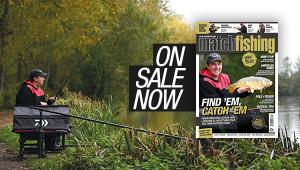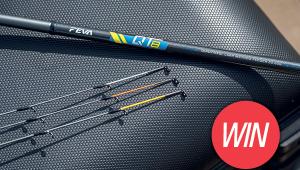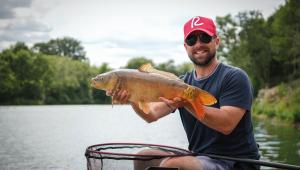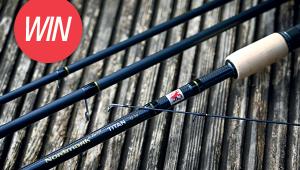High Efficiency Angling
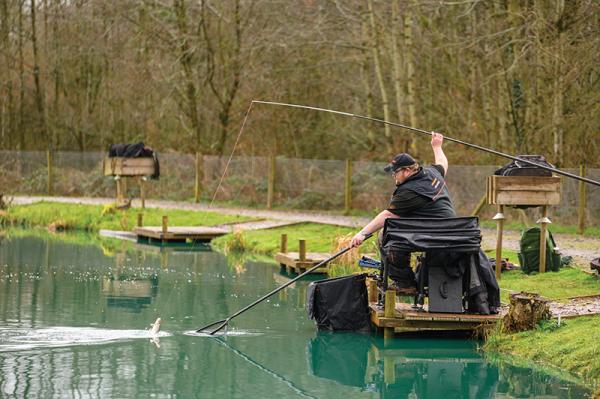
Commercial fisheries have taken a back seat for me over the past 12 months and I’ve been concentrating on natural venues like the excellent Calf Heath Reservoir and Kingswood, and can honestly say I’ve been enjoying my fishing more than ever. I can’t even remember the last time I fished a commercial it was that long ago! I used to fish them regularly and also try to get into the big-money finals, but by doing that my fishing became less enjoyable so I needed to change.
Going back to natural venues and fishing for skimmers, bream and roach has been a real tonic and not only is the fishing brilliant on the venues I’ve been going to, I have, more importantly, been loving every minute. So, it was with a bit of almost reluctance that I found myself heading to Monk Hall for a session. 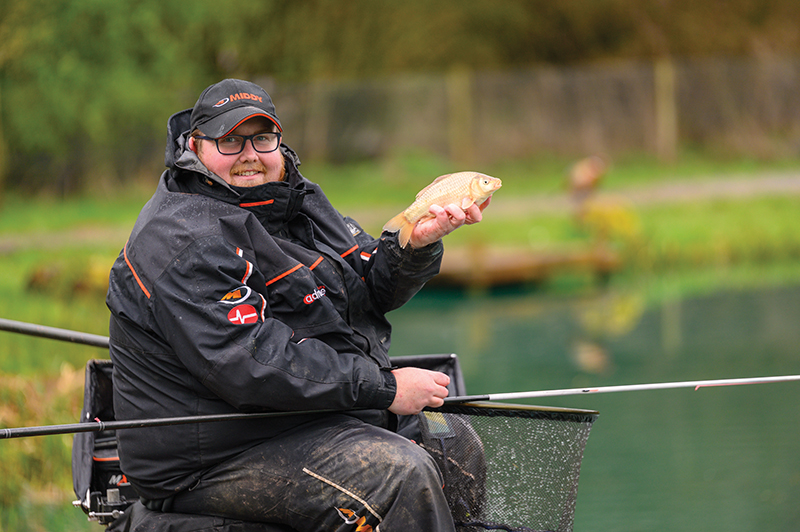 Now let me say right off the bat that Monk Hall is a fantastic venue and as far as commercials go, this one has to be one of the best. Not only is it set in beautiful surroundings, the fishing on all the pools is fantastic and very comfortable with only very short walks involved from one of the car parking areas. I’ve chosen to fish the Owl Pool today, which is at the bottom of the complex, the other lakes are situated further up the hill. This pool has five pegs on the island with 10 pegs around the perimeter and today I’m fishing a peg three to the right of the bridge. I used to fish the venue a fair bit but haven’t been here for well over 12 months so it will be interesting to see how I get on tackling the silver fish in here, which are mainly ide, but I can also expect to catch some F1s too in amongst them.
Now let me say right off the bat that Monk Hall is a fantastic venue and as far as commercials go, this one has to be one of the best. Not only is it set in beautiful surroundings, the fishing on all the pools is fantastic and very comfortable with only very short walks involved from one of the car parking areas. I’ve chosen to fish the Owl Pool today, which is at the bottom of the complex, the other lakes are situated further up the hill. This pool has five pegs on the island with 10 pegs around the perimeter and today I’m fishing a peg three to the right of the bridge. I used to fish the venue a fair bit but haven’t been here for well over 12 months so it will be interesting to see how I get on tackling the silver fish in here, which are mainly ide, but I can also expect to catch some F1s too in amongst them.
What’s also going to be interesting is that my pole hasn’t been out of my bag for months so I could be a bit rusty to say the least! Over the winter it’s been feeder fishing all the way for me and not only have I enjoyed the fishing, I’ve also done it on the cheap because my bait bills have been drastically reduced and I’ve not been travelling too far from home. Today it’s a 100-mile round trip and if I’m going to catch 50lb of silvers I’m going to need more than half a bag of groundbait and a handful of other baits, which is what I’ve been fishing with over the winter. 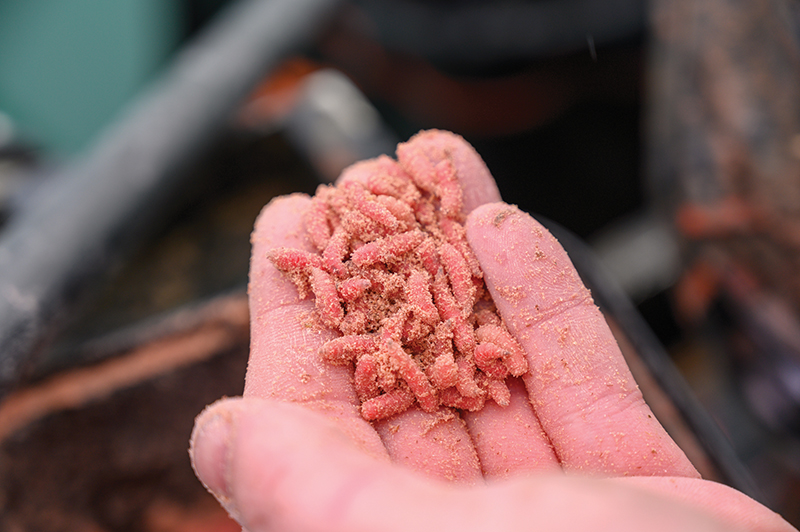
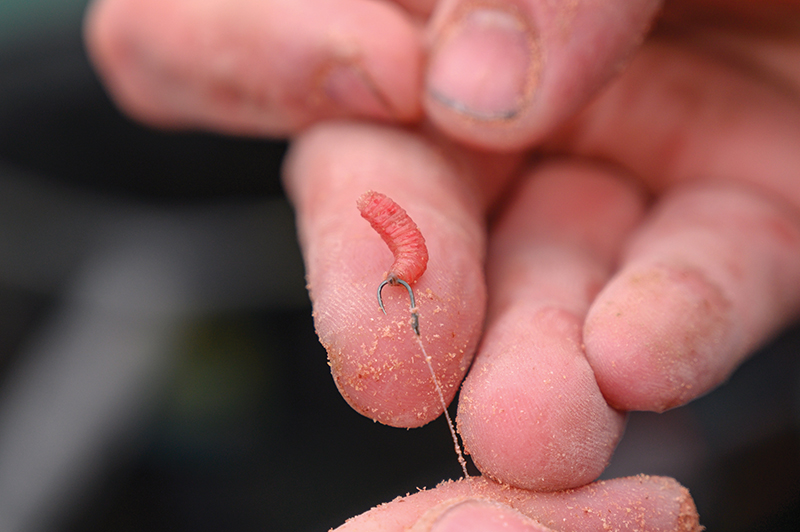 At the time of writing the fish are really starting to wake up and for today’s session I’m going to keep it dead simple and fish maggot on the pole. I’ve got five pints with me and because I’m pleasure fishing I probably won’t need that many, but in a match I’d expect to feed them all to keep the fish in my peg. Although it’s the last day of March when we shot this feature, the weather has gone cold again over the last couple of days and it’s wet! March has been a very wet month so why not finish the month off with more of the same!
At the time of writing the fish are really starting to wake up and for today’s session I’m going to keep it dead simple and fish maggot on the pole. I’ve got five pints with me and because I’m pleasure fishing I probably won’t need that many, but in a match I’d expect to feed them all to keep the fish in my peg. Although it’s the last day of March when we shot this feature, the weather has gone cold again over the last couple of days and it’s wet! March has been a very wet month so why not finish the month off with more of the same!
With a target weight of 50lb I’m going to need to catch a lot of fish so loose feeding maggots and getting these ide up in the water so I can catch them shallow will be the way to go. If I can get them feeding, a weight in excess of 50lb is on the cards because there are plenty of them in here and they average 10oz to 12oz so you don’t need that many fish really when they’re all that size.
I’m really just thinking about getting my head down and fishing one swim today down the middle; there’s no need to do anything else to start with. If the fishing is a lot harder than expected I can then think about moving lines and feeding bait in other swims. Hopefully it won’t come to that and I’m fully expecting the fish to stay where I’m feeding once they arrive in the swim. 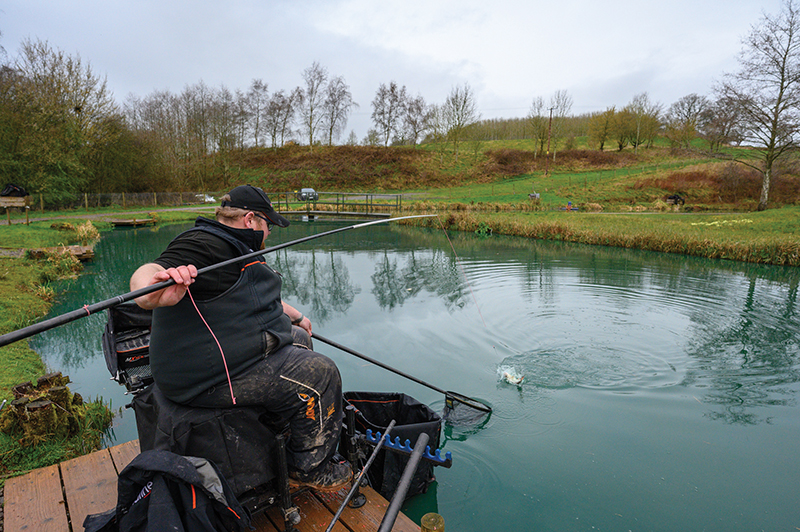
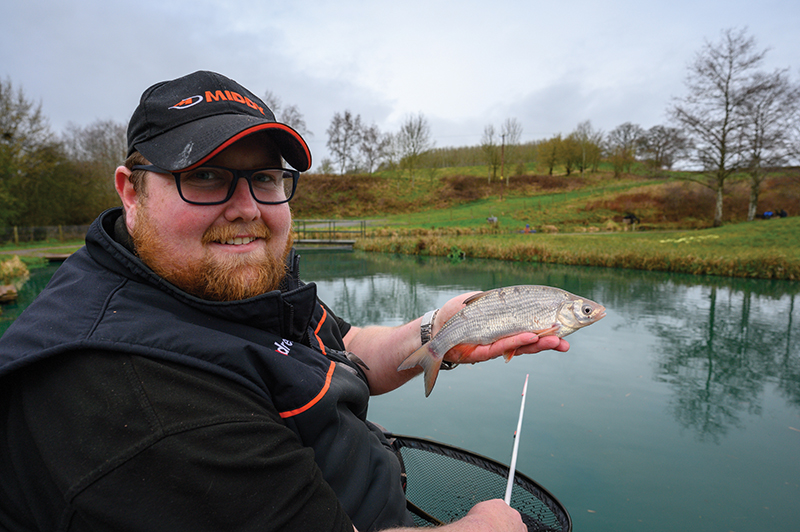 I’ve set two rigs up today and they’re both for fishing shallow; I’m not even going to plumb the depth because like I said earlier, the best way for me to get to 50lb today is to catch up in the water. Light floats are the order of the day and I’ve set up a 4x12 and a 4x10 rig on 0.16mm main lines to 0.12mm hooklengths. Size 18 hooks finish them both off. My elastic is a Middy Hi-Viz Shock Core 10-14, which may seem heavy to some, but it’s more like a lighter 8-10 in the way it performs.
I’ve set two rigs up today and they’re both for fishing shallow; I’m not even going to plumb the depth because like I said earlier, the best way for me to get to 50lb today is to catch up in the water. Light floats are the order of the day and I’ve set up a 4x12 and a 4x10 rig on 0.16mm main lines to 0.12mm hooklengths. Size 18 hooks finish them both off. My elastic is a Middy Hi-Viz Shock Core 10-14, which may seem heavy to some, but it’s more like a lighter 8-10 in the way it performs.
I’ve also chosen to fish this heavier grade because I’m not going to be breaking the pole down today, so the beefier elastic helps when it comes to netting fish. I’ve got it set a little bit ‘pingy’ but not too much – I set the tension so the elastic crept back into the pole and then I trimmed a further three or four inches off it so it pings back into the pole tip. If I was using something like a 6-8 grade I wouldn’t be able to get the fish in as quickly and I’d have to break the pole down to net fish, so fishing that bit heavier elastic can really help increase the catch rate. I would also have to strip more elastic through the puller kit with a lighter grade and then the elastic bottoms out, which means there’s more chance of pulling the hook out.
To start the session I simply slap the rig in and then feed around 20 maggots just short of the float and repeat every 30 seconds or so until the fish arrive. Once there are fish in the peg the only thing I need to get right is the depth, and in this session I found myself shallowing up quite early on because it was clear there were a lot of fish in front of me competing for the bait. If you fish too deep you can get a lot of liners and foul-hooked fish if the bait doesn’t get snaffled within the first few seconds of the rig hitting the water. 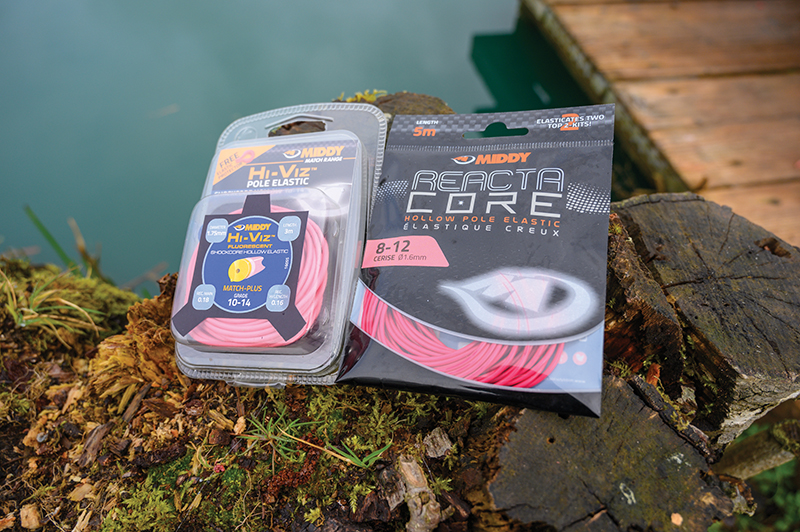
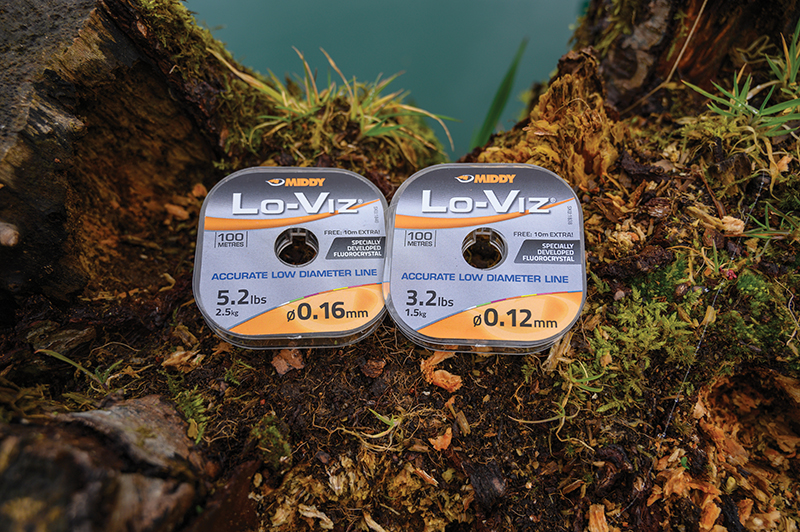 Once I start catching it’s clear to see how important getting your elastic right is for this sort of fishing. As I lift into a fish, I get just enough elastic coming out of the pole to prevent the fish from being pulled up and breaking the surface and causing disturbance. I get just the right amount coming out to keep the fish down and steer it quietly out of the swim without his mates knowing what’s going on. Feeding more maggots as soon as you hook a fish also helps with this. Then, once I start shipping the pole back, there’s plenty of cushion there to stop hook-pulls and then because of the extra power, it’s straight into the net without breaking the pole down, which is a massive time saver for those occasions when you find yourself in a fish race.
Once I start catching it’s clear to see how important getting your elastic right is for this sort of fishing. As I lift into a fish, I get just enough elastic coming out of the pole to prevent the fish from being pulled up and breaking the surface and causing disturbance. I get just the right amount coming out to keep the fish down and steer it quietly out of the swim without his mates knowing what’s going on. Feeding more maggots as soon as you hook a fish also helps with this. Then, once I start shipping the pole back, there’s plenty of cushion there to stop hook-pulls and then because of the extra power, it’s straight into the net without breaking the pole down, which is a massive time saver for those occasions when you find yourself in a fish race.
Fishing a single maggot on the hook is by far the best hook bait and I’m swapping between hooking the bait the traditional way through the end, or hooking it through the middle. I definitely hit more bites using the latter and once I’ve got myself at the correct, optimal depth that also allows me to hit the most bites, I can really motor along because I’m hooking a fish within seconds of the bait touching the water every drop in. Even Calf Heath Res isn’t this good and the other advantage of not breaking my pole down is that I’m not wearing it out!
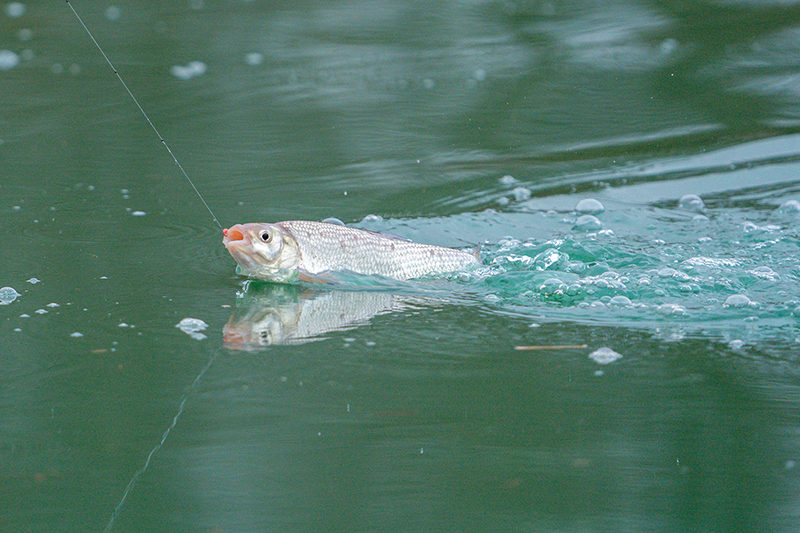 I do have the odd spell when bites become hard to hit or fish come off the hook more often than I’d like, but those are just things you have to put up with in this style of fishing. For me today it’s just a case of keeping the bait going in, knowing that the fish will feed properly again when I’ll hook and land everything. It’s mostly ide that are feeding but every now and then an F1 will put in an appearance and they’re very useful additions as today I’ve had them up to 3lb.
I do have the odd spell when bites become hard to hit or fish come off the hook more often than I’d like, but those are just things you have to put up with in this style of fishing. For me today it’s just a case of keeping the bait going in, knowing that the fish will feed properly again when I’ll hook and land everything. It’s mostly ide that are feeding but every now and then an F1 will put in an appearance and they’re very useful additions as today I’ve had them up to 3lb.
When you’ve got everything set right and the fish are feeding, it becomes easy to get into a rhythm and even after a winter of feeder fishing, it doesn’t take long to get into the groove. I reckon it’s only taken me three hours to get to an estimated 50lb today but just to make sure I’m over the target weight, I carry on for an extra half an hour and add at least another 10lb before the rain looks like it’s going to set in once again, so it’s time to make the decision and call it a day. 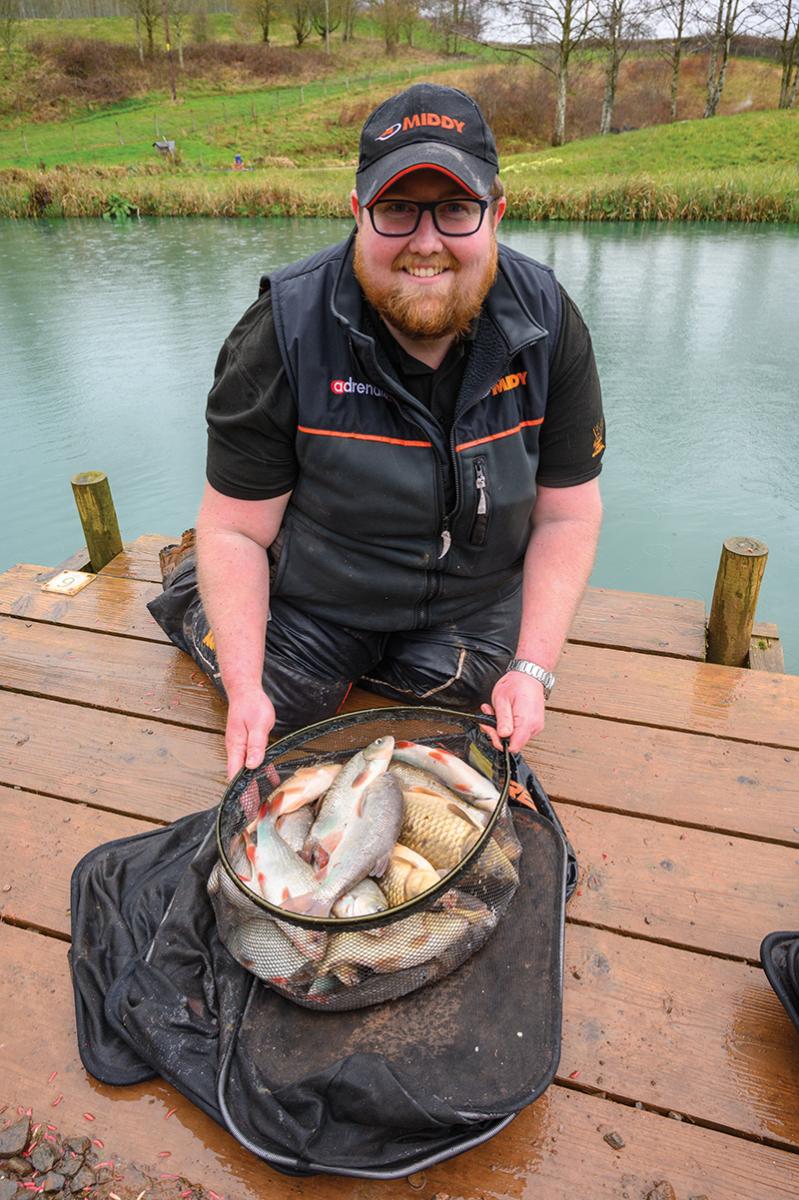 In summary, here are the top tips to take out of the day that will help you become better at catching lots of fish shallow:
In summary, here are the top tips to take out of the day that will help you become better at catching lots of fish shallow:
- Choose your elastic carefully. Don’t be afraid to go a bit heavier than you would normally go because it will help you get those fish in the net faster.
- Don’t break your pole down. Once you have your elastic dead right, you can easily net fish without having to break your pole down and that will save you a lot of time in a fish race.
- Find the right depth. Ideally you need to fish as shallow as you can while still being able to get bites. If you fish too deep you can easily end up missing bites and foul hooking fish.
- Fish one line. In a fish race you don’t want the added worry of feeding other lines. Concentrate on one area and if the fishing does turn out to be harder than expected, you can worry about changing lines and feeding other areas then.
- Don’t rush! Even in a fish race don’t try and do things too quickly because you’ll only end up slowing yourself down! Get everything working correctly and then get into a smooth, efficient rhythm.
- Log in or register to post comments
